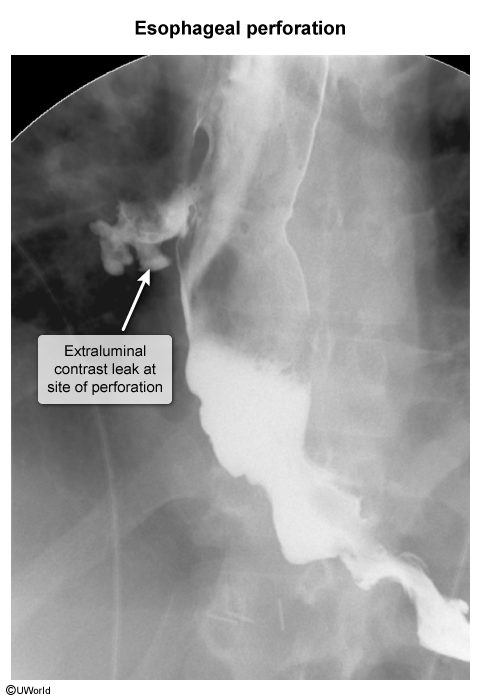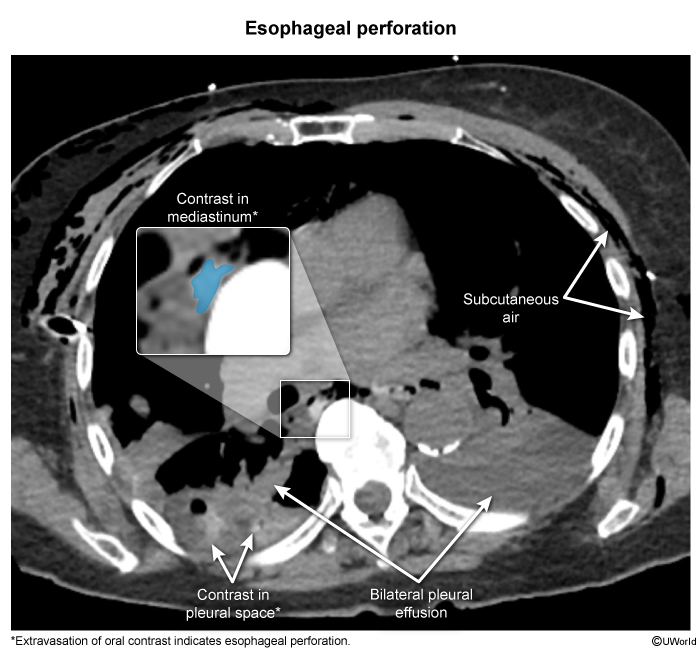Esophageal Rupture
Article Sections
Introduction
Esophageal perforation is a rare, life-threatening condition characterized by a full-thickness tear in the esophageal wall, often related to forceful, protracted vomiting (ie, Boerhaave syndrome) or endoscopic injury. Efflux of esophageal fluid and air into the mediastinum causes severe chest pain, dyspnea, suprasternal crepitus, and a systemic inflammatory response that can quickly progress to septic shock and death. The diagnosis is confirmed by CT scan or esophagography, which reveals extravasation of contrast from the esophagus. Treatment includes broad-spectrum antibiotics, proton pump inhibitors, and emergency surgical repair.
Pathophysiology
The majority of esophageal perforations are iatrogenic, caused by inadvertent injury during endoscopic procedures. When spontaneous perforations occur, they are typically related to effort rupture (ie, Boerhaave syndrome), which is characterized by a sudden increase in intraesophageal pressure and a decrease in intrathoracic pressure (eg, forceful retching, straining) that causes a transmural esophageal tear. Tears occur most often on the left posterolateral wall of the distal esophagus due to intrinsic weakness in this area. Subsequent leakage of esophageal and gastric contents into the sterile mediastinum can rapidly lead to mediastinitis, septic shock, and death.
Continue Learning with UWorld
Get the full Esophageal Rupture article plus rich visuals, real-world cases, and in-depth insights from medical experts, all available through the UWorld Medical Library.
Images

